
Push-Pull Pot Power!
A Push-Pull Pot can add a ton of versatility to your guitar! They are a great way to add a switch, or other cool mods without modifying your guitar too much. You can use them to reverse the phase, split a Humbucker, or trick your guitar out in a fresh way. They can be a little tricky to wrap your head around, but once you get the basics, they are easy to understand.
Table of contents
A Push-Pull Pot, in its most basic definition, is a Potentiometer, attached on top of a Switch.
We refer to the switch as a DPDT (Double Pole, Double Throw) Switch. ‘DPDT’ means the switch has two separate “poles”, or sides to it.
If you’re not familiar with how pots work, we recommend going back to Part 1 and check out our article on pots here.
The Basics of Push-Pull Pots
The Pot
There are two components of a Push-Pull Pot: the Pot and the Switch. Even though they look combined, they are actually separate. As described in our previous article, the Pot is a variable resistor. It has a resistance strip and a sweeper to choose the resistance. Lug 1 is the start of the resistance strip, and Lug 3 is the end. Lug 2, or the middle lug, is the sweeper.
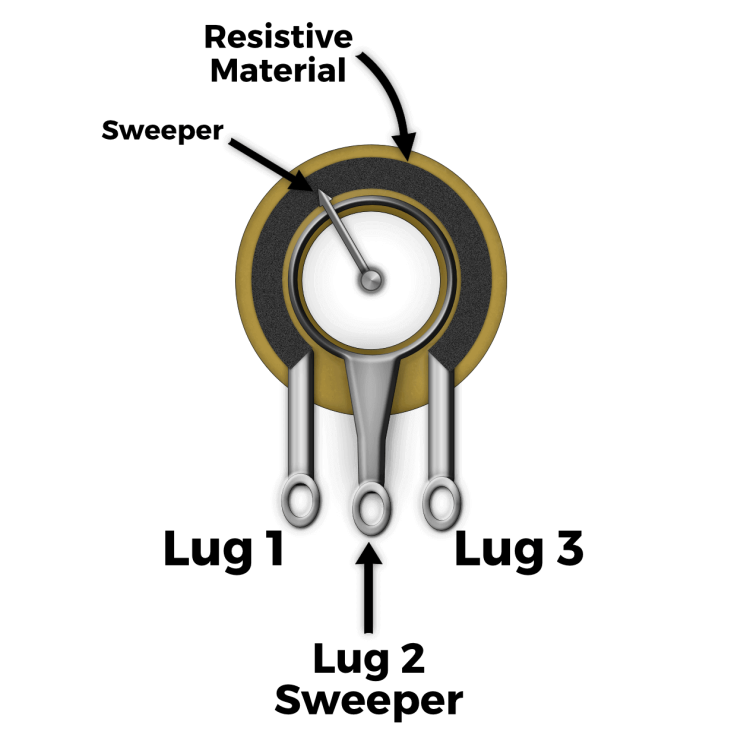
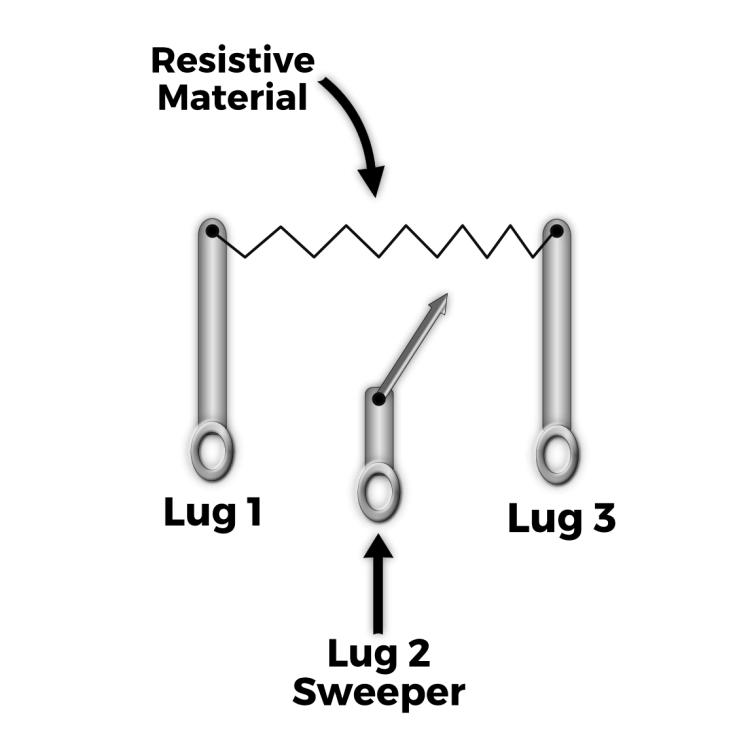
The other part of the Push-Pull pot is the Switch. The DPDT switch has two sides. Side 1 (A – B – C) is entirely independent of Side 2 (D – E – F).
We refer to the center lugs, B and E, as the “common” or inputs of the switch – they stay connected all the time. See below for an illustration of the Commons:
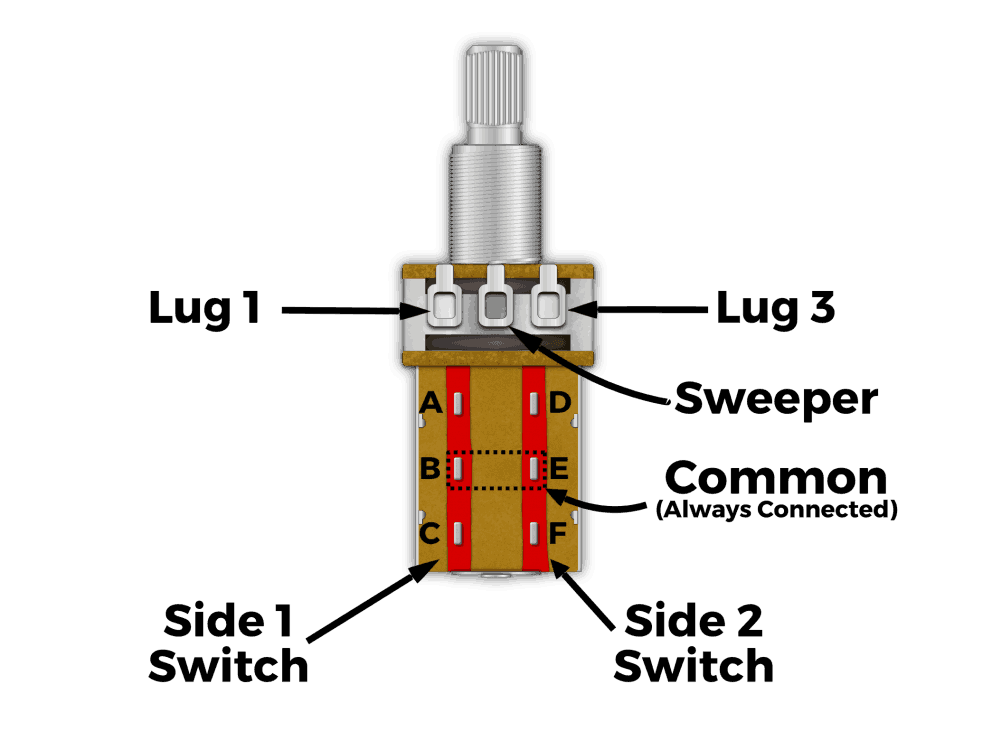
The Switch
There are two separate sides of the switch (hence the ‘double’ in Double Pole, Double Throw). We can call them Side A & Side B. The Selector connects the different terminals on each side. Check it out:
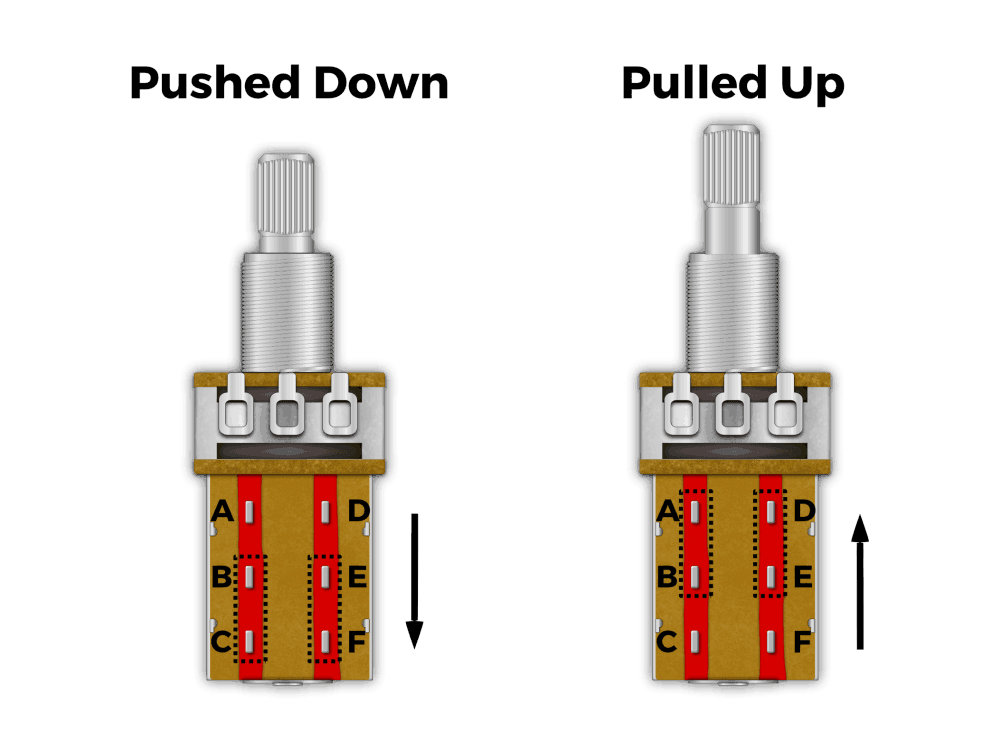
When pushed down, the Selector is selecting the bottom four lugs (B-C-E-F).
- B connects to C
- E connects to F
When pulled up, the Selector slides up and is now selecting the top four lugs (A-B-D-E).
- B connects to A
- E connects to D.
- As you can see, B and E stay connected.
Push Pull Pot Examples
Coil Splitting
Coil Splitting is just one of the many things you can do with a push-pull pot and is a great place to start our understanding of them. You can use Coil Splitting to turn a Humbucker into a Single Coil by sending one of its coils to ground.
For illustration, we drew this out for you below. We used both sides of the switch to illustrate two points:
- It shows how to wire up 3-Conductor and 4-Conductor, and
- It shows that you can tap two separate humbuckers with the same switch, by using both sides.
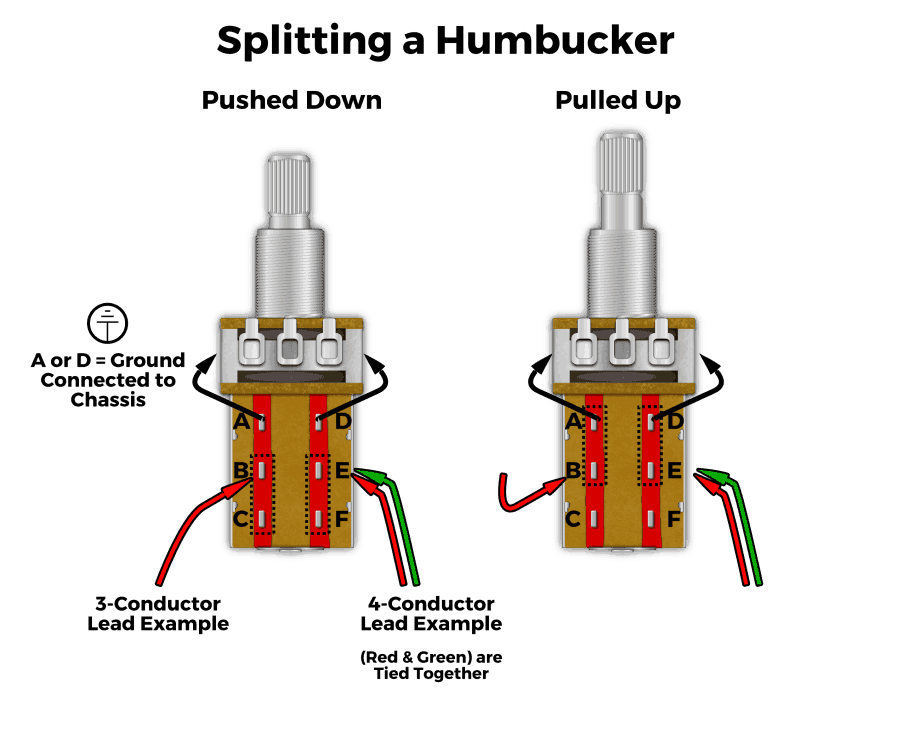
HOW IT WORKS:
- When the Push-Pull Pot is pushed down, The humbucker is working like normal.
- When the Push-Pull Pot is pulled up, the “Tap” (Red on 3 Conductor, Red, and Green Tied Together on 4-Conductor) is sent to ground, “Shorting out” the coil. The entire Casing of the pot should be grounded, so theoretically, you can ground any wire off of the switch by just running a jumper to the casing.
Partial Coil Splitting
Coil Splitting can sound great on higher output humbuckers, like our Modern P.A.F., and our High Output Humbucker. But what if you have a low-output humbucker, like our Pure P.A.F.? Fear not. You can “Partially Split” the coil, with our Partial Tap Resistor.
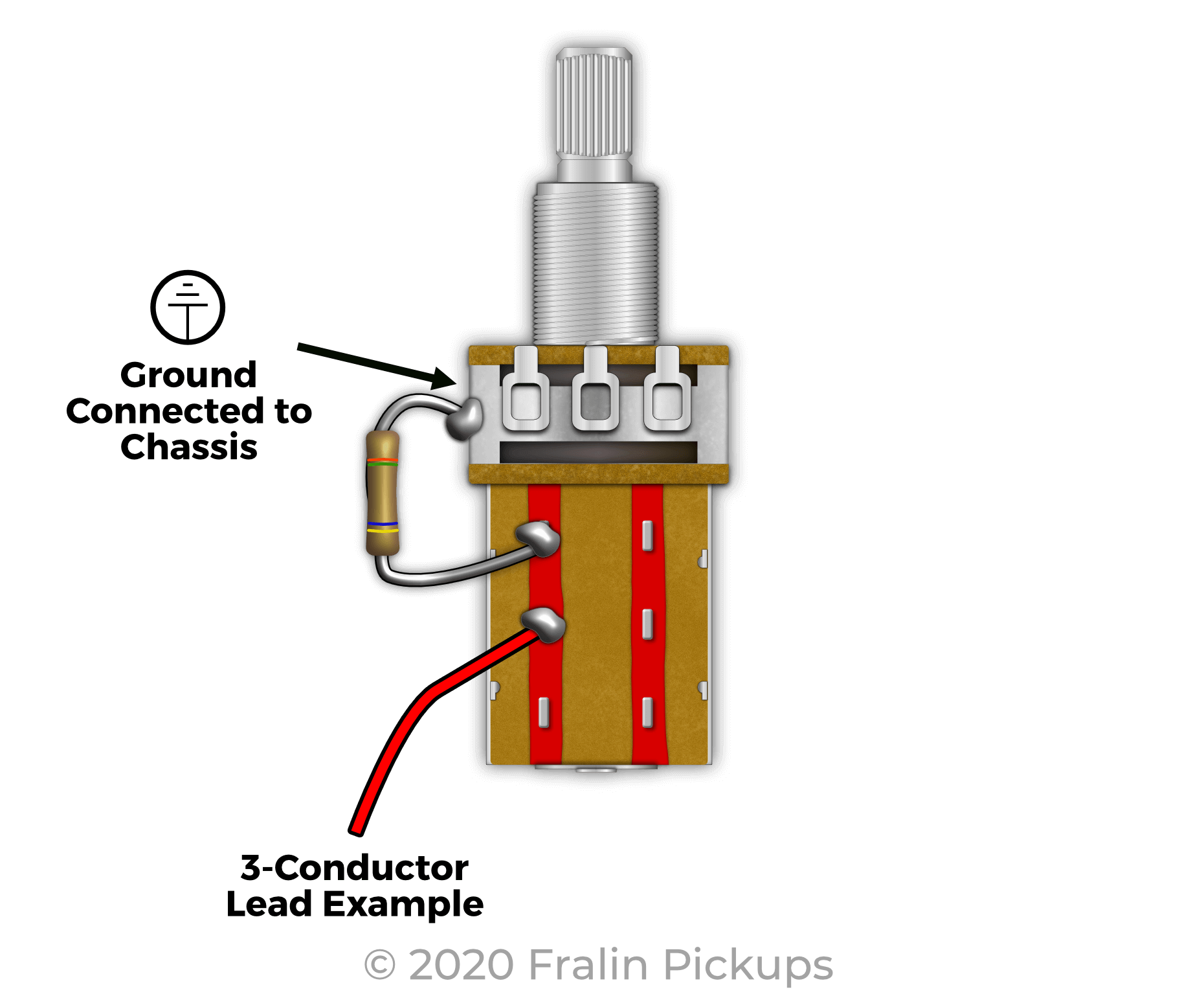
How it Works:
When you pull up on the push-pull pot, B connects to A, and your Slug Coil will be sent to ground, only this time, it goes through a resistor. This prevents the whole signal from being grounded by putting a partial short across the coil, instead of a full short. In turn, you’re getting a stronger single-coil sound from your humbucker when split.
PHASE REVERSING
Phase Reversing is a neat little trick when you want to reverse the coil direction of your pickup.
Some find this sonically pleasing, mainly when used with a Blender Pot, which will roll in the pickup’s phase – pretty cool! To do this, you need 2-Conductor Wire. Remember to ground the Shield (Bare). Here’s how to wire this up:
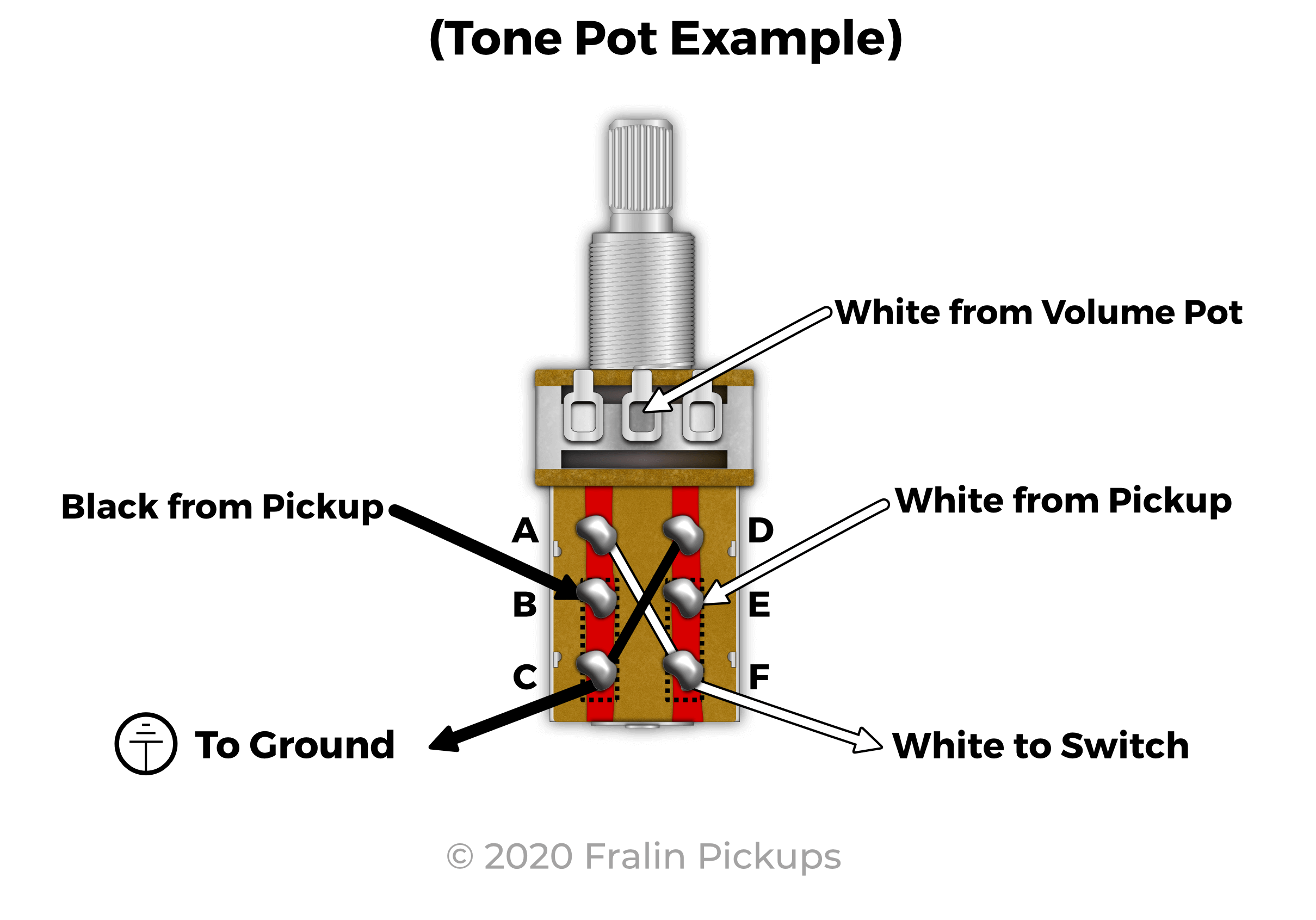
How it Works:
When the switch is in the down position, White connects to White (Terminals E > F), Black connects to Black on Terminals B > C. When pulled up, The phase reverses!
Push-Pull Pot Mods
Two-Tone Caps, One Push-Pull Pot
This mod is pretty cool! With this mod, you can use two different tone caps with one push-pull pot. When pushed down, you can have to say, a .02mfd Cap, and when pulled up, you can have a Fralin Magic Cap, or vice-versa!
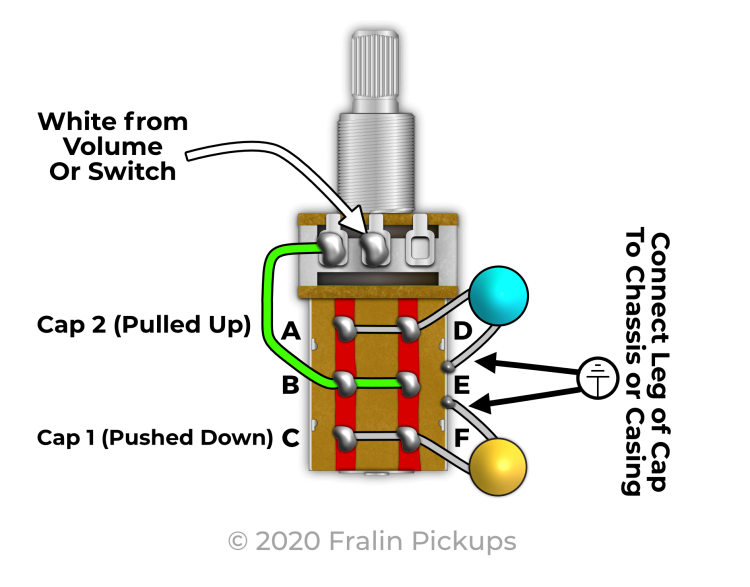
How it works:
- The Signal enters the Pot at Lug 2.
- The Sweeper, Lug 2, is connected to one side of the switch, at point E. (This whole thing can be reversed).
- When Pushed Down, the Signal is being sent through Terminal F. When Pulled Up, the Signal is being sent through Terminal D.
- The other side of the switch is Grounded. When you roll the Tone Pot, more of your highs are being sent to Ground, via whichever cap value you choose.
Engage Treble Bleed
Our Fralin Volume Kit is a great Treble Bleed circuit. If you’re not familiar, the Volume Kit keeps your high frequencies intact as you roll the volume down.
Country, Blues, and Rock guitarists love this as it keeps their crisp highs when they roll down the volume. But what if you need more versatility? Here’s how you can engage it by pulling up on the Push-Pull Pot: When pushed down, your volume knob will act like normal – it will bleed treble to ground. Pulling up on your Push Pull Pot sends your signal through the Volume Kit – your guitar keeps its shimmer!
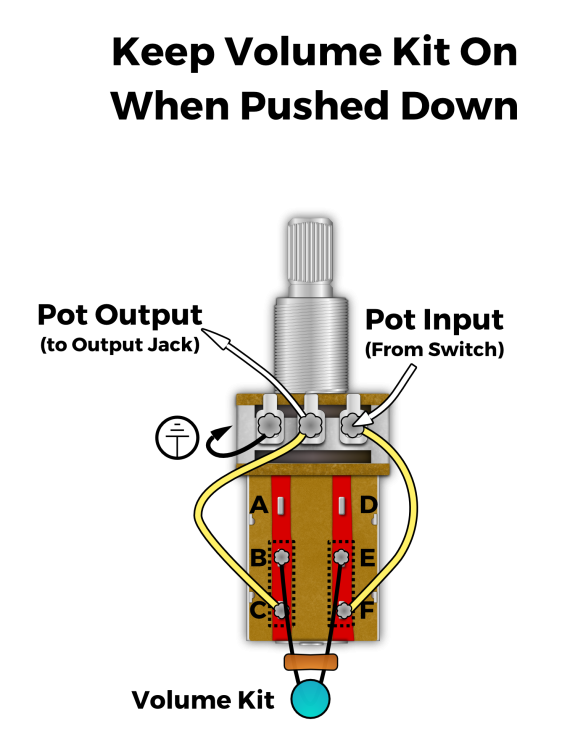
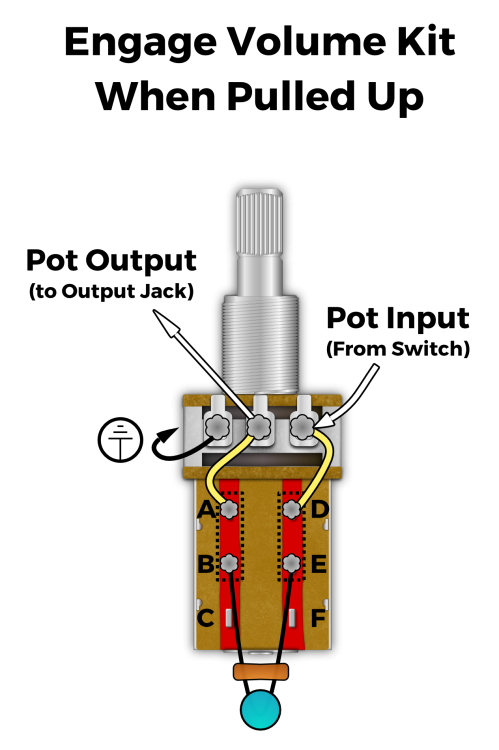
How it works:
- When pushed down, your signal is entering through lug A, but it ends there, as it doesn’t have anywhere to go.
- Pulling up, A > B connect, and E > D are now connected, connecting the Volume Kit to your circuit.
If you want to reverse this, simply move the Connector Wires (two cream wires in the photo above) to Lugs C & F. This will remove the Volume Kit when you pull up.
Bright Switch
The “Bright Switch” is a simple mod that adds a little extra Treble to your signal.
The Bright Switch works by removing your Volume Pot and Tone Pot from your signal path, which always “load” your signal. Mostly, it’s connecting your guitar’s pickups directly to the output jack. It’s a pretty crazy difference – your guitar sounds bigger, brighter, and louder.
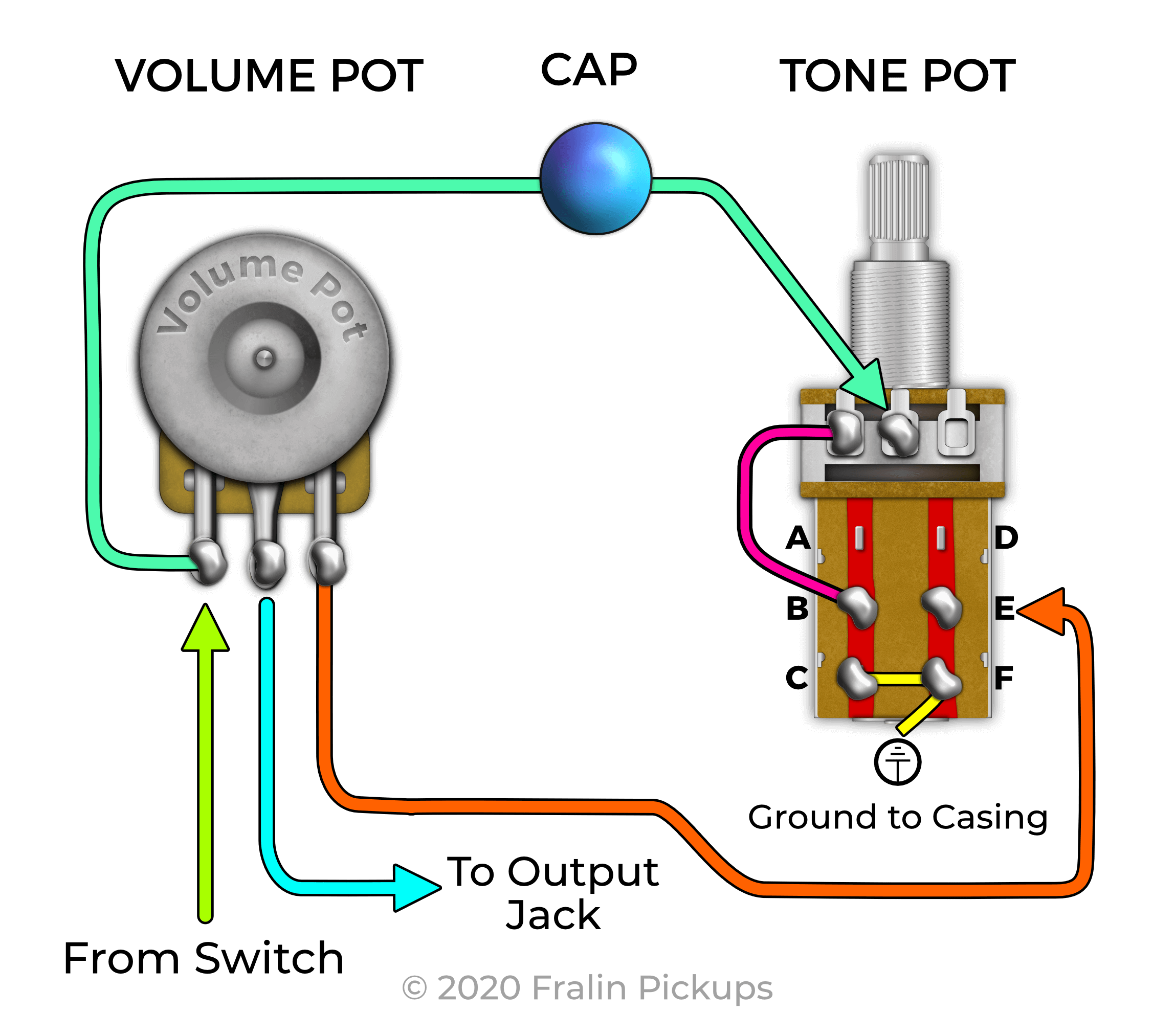
How it works:
The Bright Switch has more parts involved, thus it is a bit more complicated. When your Push-Pull pot is down, all the wiring is the same as a Strat or a Tele. The Signal enters Lug 1 of the Volume Pot, and Lug 1 is also connected to the input of the Tone Pot.
When the Push-Pull Pot is down, Lug 3 and the Cap are both connected to Ground. They connect to ground via connecting to terminals C & E of the Push-Pull pot.
When the switch is up, the ground lifts off of the tone pot and the volume pot. This allows your signal to connect directly to the output jack, with no Load.
Note: Pickups and other electronics get grounded to the back of the volume pot, just like normal. The 3rd Lug just isn’t connected.
Series / Parallel Switching For Humbuckers
Changing your humbuckers from Series to Parallel works well for some humbuckers, especially some higher output humbuckers. You can get some of that “Strat Quack,” and it opens up a whole new dimension for your humbucker. To accomplish this mod, you’ll need a humbucker with a 4-conductor lead. Please note that the color codes are for Fralin Humbuckers only.
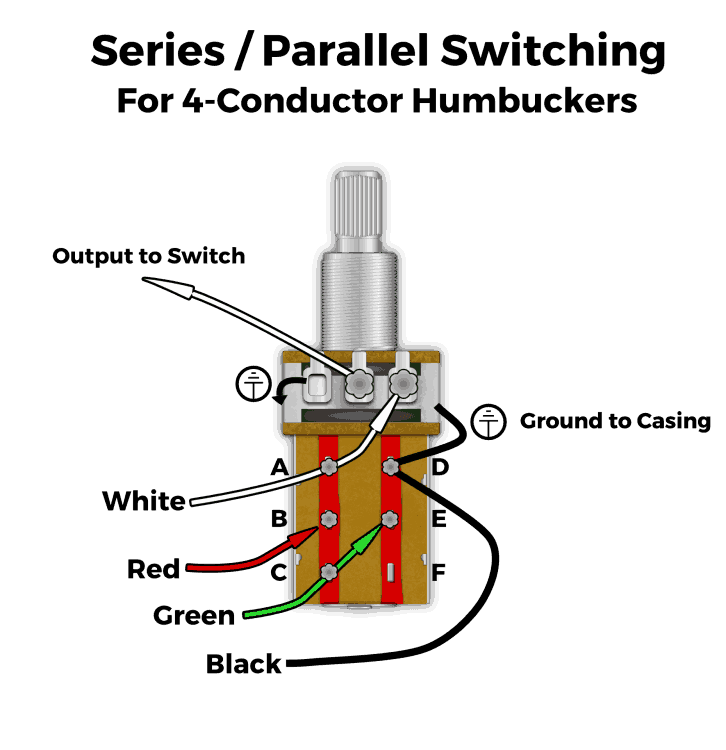
How it works:
Red connects to green Green when the switch is down. This is a regular “series” humbucker operation. By pulling up on the switch, Red is now connected to White, and Green is now connected to Black. The “hots” connect, and the “starts” connect together – giving you your parallel.
Push-Pull Pot Odds n’ Ends
Before we wrap up, here are a few things we want to clear up.
Notes On Grounding
You can use anywhere on the Pot’s chassis to ground a signal. So, when grounding wire, you can run it to the metal housing that houses the DPDT switch, or the side of the Pot itself. A neat little trick is to ground wire on the bottom tab at the very bottom of the Switch. (See the image at the top of the page to see what we’re talking about here).
CTS Pots
CTS® has a new type of Push-Pull pot, which can make wiring a little easier. CTS made these contact points easier to reach so that you can fit this pot in more guitars. However, if you’re not familiar with how it’s all connected, it can be a little confusing. Here’s what it looks like:
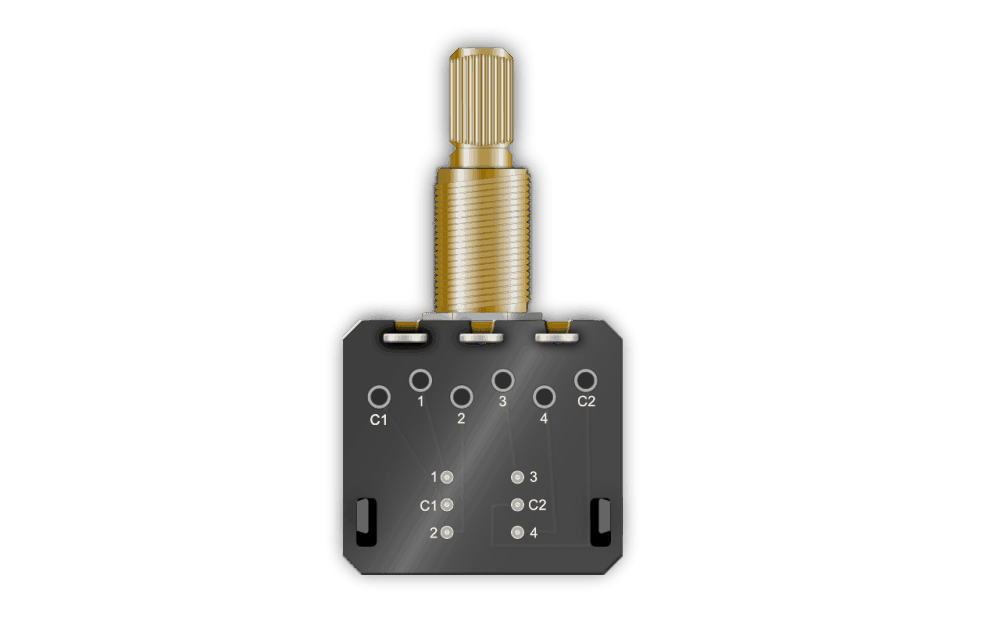
Instead of running your jumper wires to small lugs, you can run them to full-size holes. The order is a little different, but all the concepts are the same.
Well, that’s all for now. I hope that this article has been helpful and informative. We have Push-Pull pots available on our website here. Now, grab some and get to modding!
Comments
176 Comments For This Post
Leave A Comment
Want to chime in to the conversation? Please do so! Please respect others.


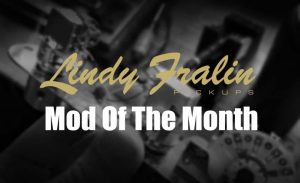

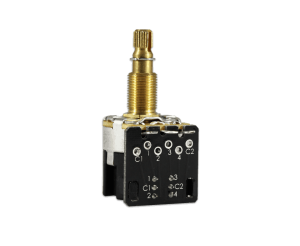
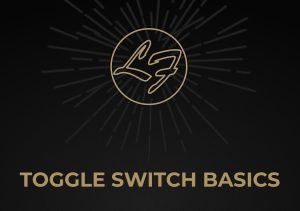
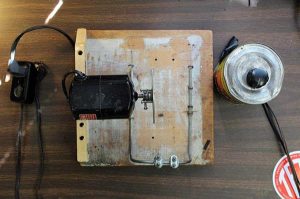
Hello Tyler
Thank you kindly for all the information and help that you provide to many people
I know very little about guitar electronics,that’s why I am asking your help.
Do you have any detail diagram of a 2 humbuckers,3 way toggle switch ,one volume,one tone,with the with a tone push/pull pot in series/parallel for the bridge humbucker pickup?
The neck humbucker pickup stays as it was .No changes.Only the bridge humbucker pickup in series parallel.
Thank you kindly for your help
Regards
Arthur
I purchased the volume kit and wired it like the diagram. The volume never turns off. However, when I remove wires going to the lugs the volume works. Is it a bad pot or do I need to ground something different.
I have a 3-way switch where the 2 pickups hot go, no spliiting of coils and one tone.
Thank you for the page.
Hey Davis,
Is Lug 3 grounded? If the volume never turns off fully, that’s usually an indication of a cold solder joint or Lug 3 is not grounded at all.
Is it possible, in addition to the 7K resistor partial split which worked well in my setup, to combine the 470K/500K resistor in parallel mod to mimic a 250K pots only for the single coil split with my 500K push-pull CTS pots? I find the split signal is still thin, and while closing the tone works, I still want to have less higher ends to make the coil-split signal sound thicker.
Hello Tyler- Thanks God i found this place- I am from Argentina- i have a bass with one custom made humbucker with assymetric coils four wires and a bare for ground and i wanted to use the typical series-parallel switching but the sounds i get with the parallel mode are totally useless due to the assymetric coil design- i get a hollow sound that is totally unusable- just experimenting a bit i cut one of the cables and tried to see if it sounded good in single coil mode and i discovered it sounds killer like that- so my question is: is it possible to make a switching system with two push pulls, one being tone and the other volume, and have the humbucker as : humbucking series, north coil, south coil? and what other possibilities could i have with two push pulls as long as its not a parallel mode? or if its not possible, how should i wire it for humbucking series- one of the coils? thank you very much!!!
I have a DIY Jazzmaster. I love it but I put a neck pickup in the Bridge position because I like the way it sounds. As a result I have two North oriented pickups with no noise cancellation in the middle switch position. 1. Can I reverse the polarity of Jazzmaster pickups by the wires (black for white and white for black) and 2. Your push pull pot for polarity switching shows it for the tone control. Doesn’t that eliminate the tone control as a functioning tone control? Can I add a cap to that diagram to make it more functional as a tone control or can this diagram also be used for a volume control? Thanks in advance!
ho to wire a push pull pot for single coil with tap with 3 wires?
I have a Guild S-300. Are Log potmeters preferred above linear? 250 or 500 kohm?
Thanks a lot
Help!
On the coil splitting example, the four-wire picture only shows three wire. Also, the diagram does not show the input and output connections.
How can this work with red and green together?
Push-Pull Pot Mod #3: Bright Switch
This isn’t correct!
No matter how you see it, the current (signal) coming from the PU (or switch) and being fed to the Vol pot, although being lifted from the ground side of the Vol pot, is still ALWAYS PROCESSED by the variable resistor of the Vol pot.
You got to redesign that circuit to also shortcut hot to jack, therefore bypassing the variable resistor of the Vol pot
The correct wiring is connecting switch (PU hot) to B, Lug3 of Vol pot to C, Jack to A. This way, PU hot can be routed directly to the jack without going through the Vol nor the Tone pots (no variable resistor, no more sending hot to ground, no more tone CAP).
Can I make this as an active/passive switch?
Hi Tyler, I would just like to know how to split a Humbucker using a push pull pot, but the other way around: when pushed down, it stays single, and when pulled up it works like normal. Thanks in advance!!!
Hey Sidney,
Simple – just change the ground connector from the “A” lug to the “C” lug. This will ground the second coil when down, and release the ground when pulled up.
Hey, trying to troubleshoot something with a current build/mod. It’s HSS 1 Volume 1 Tone 5-way switch, made the volume pot a push/pull and it looks like everything is connected where it needs to be, but I am having really bad static issues (which I assume to be grounding issues). I can hear output from all three pickups, but it’s really low and buried in the static/humming sound. Any ideas on what I should check for, or would you have a wiring diagram for that setup that I could reference? Thanks in advance.
OK i have an interesting question here. I just bought an old Peavey Wolfgang guitar. One 3-way selector with one volume and one tone control. Got a steal on it because somebody had cut a hole in the middle for a middle single coil pickup. Guitar did not come with a single coil in it but I would like to put one in it. I do not want to do anything way to fancy with all the pickups but was hoping that if I used a push/pull tone pot I could “pull it out” and activate the middle pickup and bypass the other two pickups completely, almost like a go switch for the middle pickup. I have a Seymour Duncan Custom shop Little ’78 to keep with the Van Halen vibe but not sure is this is the best way to try to wire it via push pull pot or if there is something else that can be done. Any help or advice would be greatly appreciated and loved the article.
Hello Tyler
I would like to know if is possible to split coil 2 humbuckers and have two capacitors with just a pot and a push/pull pot?
Thank you so much
Alberto Garcia
Venezuela
Check this mod here: Two Tone Cap Mod. You can make sure to NOT connect both sides of the Push-Pull pot, and have section 1 use the Two-Tone Cap mod, and the section 2 the coil-split.
Hey Tyler–
I’m wanting to do some work on an Epiphone Dot, and have a few questions.
1) Am I correct in assuming that I should use the CTS pots for space purposes?
2) If possible, I’d like to do coil-split for both humbuckers, as well as series/parallel. And who knows, maybe phase switching too? If all those are possible, is it important which pots perform which functions? I.e., volume pots for splits, tone pots for S/P and phase?
Thanks for all this info!
Hey David,
1.) I think so! I would double-check. You might need Alpha pots as they take up less room.
2.) There’s a lot going on here. You can coil split both humbuckers with one push-pull pot, but the Series / Parallel mod requires each pickup has its own independent push-pull pot. That’s three right there, if you wanted individual control over each coil-split, you’ll have all 4 pots taken up.
hello
i am building Telecaster with 2 humbuckers ,i am planing to buy your pure PAF pickups and use the PARTIAL COIL SPLITTING, i have two 500 push/pull pots one for neck and other for the bridge, my question is what kind (the number) and where I should install the capacitor
Hey Sina,
We recommend 7K for the resistor, and take a look at our diagram here.
Hey Tyler, any idea if it is possible to wire an On/On/On DPDT switch with a humbucker to achieve 1) series, 2) parallel, 3) partial coil cut (i.e. through a resistor/capacitor). I’ve seen diagrams without the r/c, but can’t figure out how to make it work with the r/c but without messing up the parallel setting.
Hello! Great article! I have a guitar with HSS configuration, 1 volume pot and 1 tone pot!! I’d like to put 2 push pull pots! In the volume pot I’d like to configure 7 way mod and in tone pot I’d like Coil Splitting the humbucker! And if I wire the treble bleed mod on the common (always connected) volume pot work for everything?? Cheers from Argentina!
https://photos.app.goo.gl/Z49NCmZLKcbCQby3A This a picture of a mod I did on my Jackson JS3 concert bass, set up for muting a specific pickup when pulled. I came up with this arrangement based off of the info I learned from this article! Thanks
This may sound stupid, but is it possible to do all 3 pickups on a parallel/series setup with just one volume push/pull pot? I have 3 hotrail pickups which all have 4 conductor wirings and a bare grounds. Any idea or wiring I could follow? Thanks!